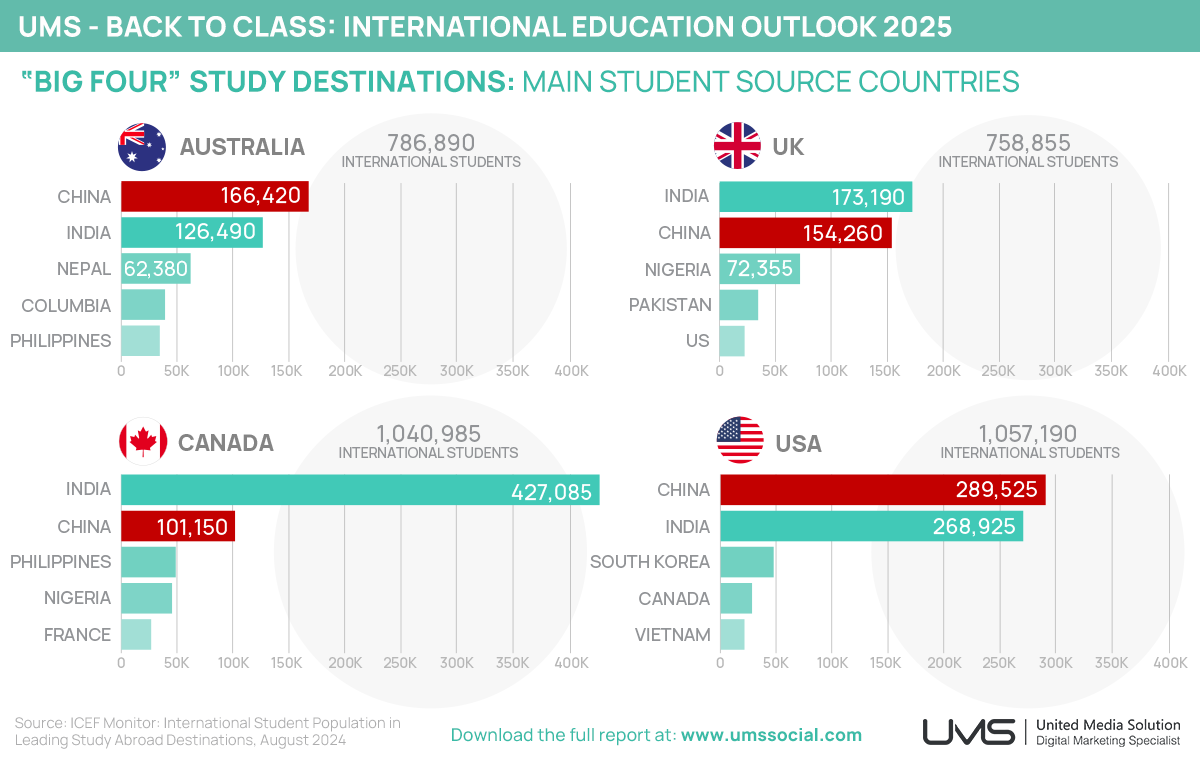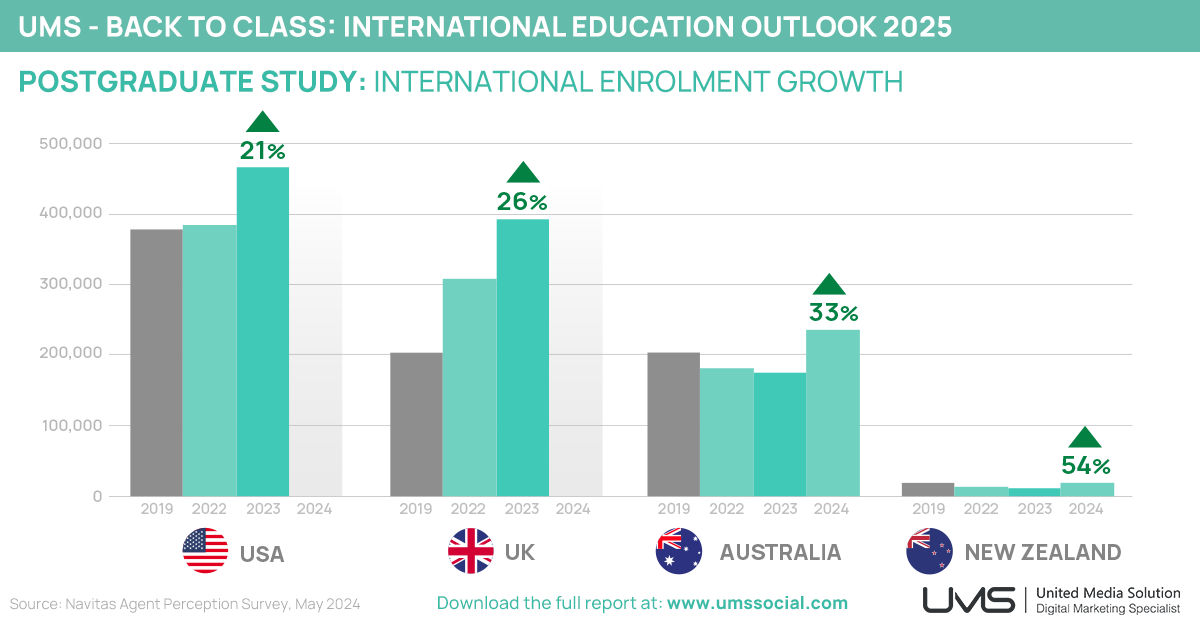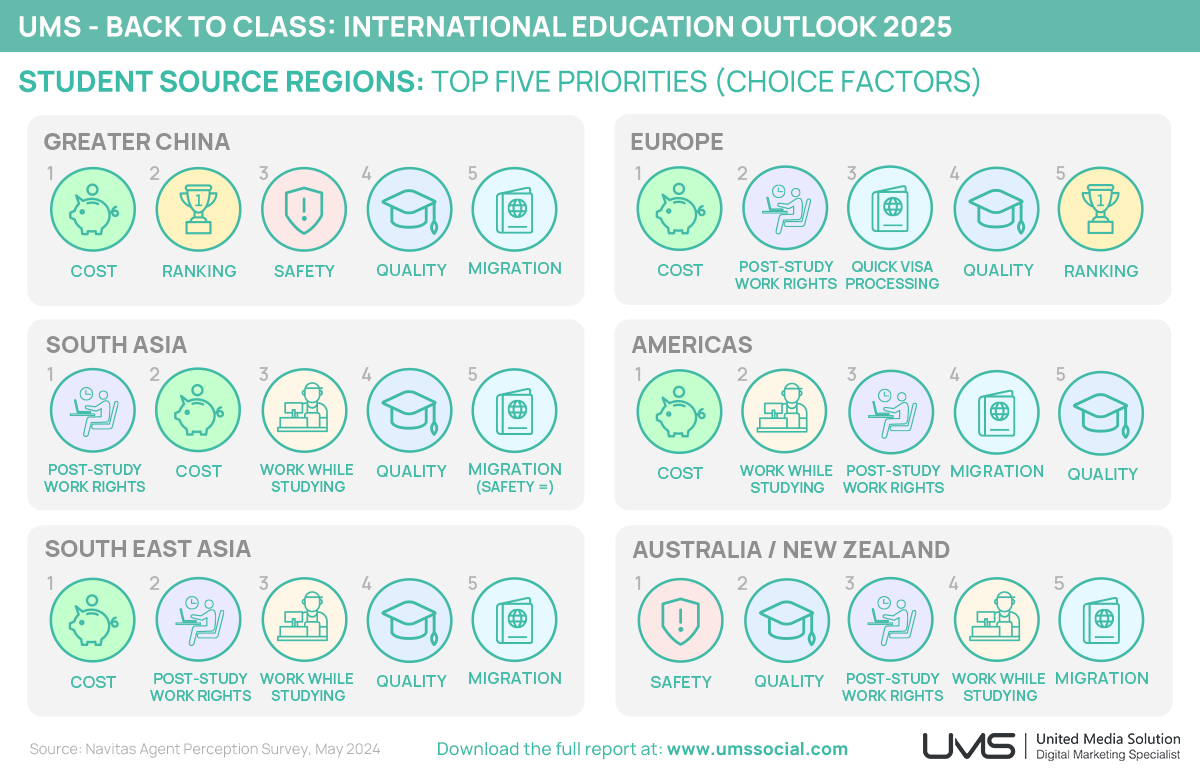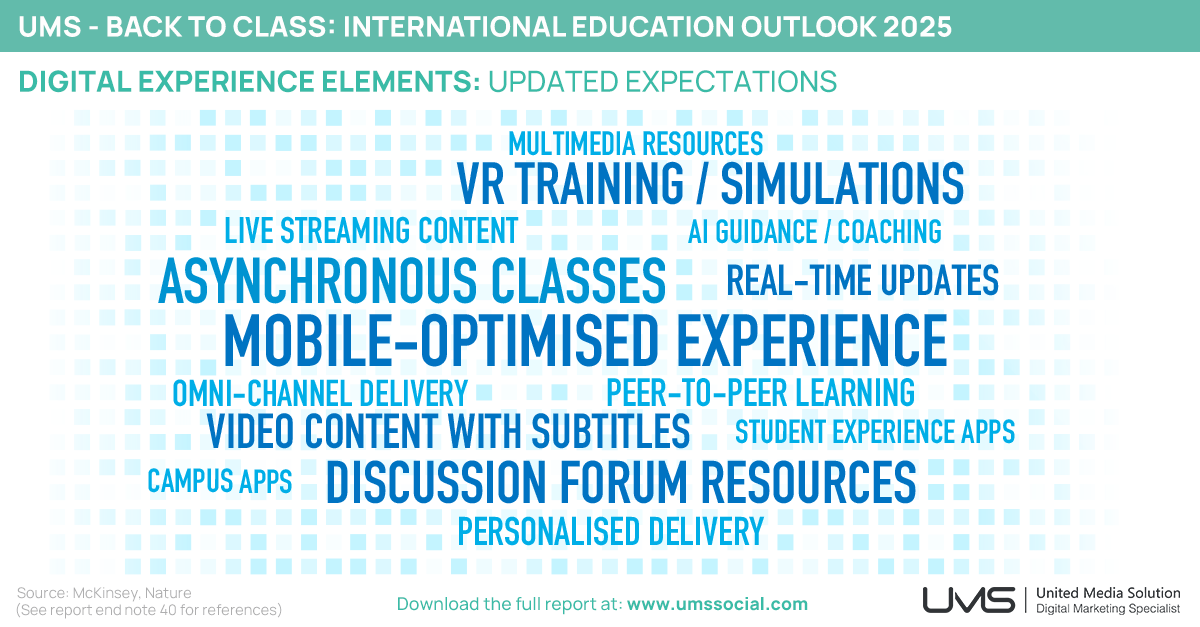The international education landscape is evolving at a rapid pace, creating both challenges and opportunities for institutions worldwide. To thrive in this competitive environment, education providers need actionable insights to attract high-quality international students, engage their parents, and address affordability concerns.
Our latest whitepaper, Back to Class: International Education Outlook 2025, unpacks the trends and forces shaping this market, helping institutions plan effective strategies for the year ahead.
INTERNATIONAL ENROLMENT GROWTH
International education is set to grow steadily in the coming years, with demand projected to reach $176 billion in tuition fees alone by 2030. This is driven by the largest markets of India and China, which boast millions of high school and university graduates each year. Increasing numbers of them are interested in overseas studies.
However, challenges like rising living costs, affordable housing shortages, and visa restrictions in key destinations are making recruitment increasingly complex.

Smaller markets such as New Zealand have many untapped opportunities to connect with students from around the world but must innovate to remain competitive against established destinations in the “Big Four”.
POSTGRADUATE POSSIBILITIES
The large wave of international students returning to campus worldwide has been met with various restrictions. From outright caps on international enrolments to changes in post-study work rights, the impact on undergraduate interest is being felt. However, postgraduate enrolments are mainly exempt from restrictions and may be an essential growth factor in 2025 and beyond.
Postgraduate students contribute to research outputs and rankings, positioning institutions as leaders in academic advancement. Targeting this cohort requires expanding outreach efforts beyond traditional agent networks to identify high-quality candidates seeking career-aligned programmes.

CHANGING PREFERENCES
Affordability, career pathways, and post-study work rights remain the top priorities for students. Parents, heavily invested in their children’s success, prioritise return on investment and long-term career opportunities. Balancing these expectations with students’ desire for cultural immersion and local engagement is critical for effective recruitment strategies.
Education institutions must look beyond the delivery of education programmes for international students. Most international students still return home to their source country, and the new skills and talent are then lost to the host economy. Employability skills are vital to connect this potential talent base with job opportunities in the host market.

DIGITAL SOLUTIONS
Today’s students are digital natives who value authentic, peer-driven content over traditional marketing. Institutions must focus on building a strong online presence and showcasing real student experiences through social media and digital platforms.
Digital delivery of educational content can improve outcomes, especially for students with English as a second language. Increased resources to support comprehension and multiple delivery formats provide flexibility for international students, across many parts of the student journey, from enrolment to graduation and beyond.
These strategies are also vital for connecting with parents and agents, providing them with the information they need in accessible, multi-lingual formats.

Prospective students expect more than just academic opportunities, they seek enriching cultural experiences, internships, and work prospects that align with long-term goals. Meanwhile, parents are deeply invested in finding value for money and a secure return on their commitment to overseas education.
By focusing on a holistic student experience, integrating affordability, career pathways, and digital-first support, educational providers can create compelling value propositions that meet the diverse needs of international students.
This strategic approach ensures not only short-term success in attracting students for the next academic year but also long-term benefits for institutions, communities, and host countries.
Download the full report here: https://www.umssocial.com/international-education-outlook/2025?s=blog













